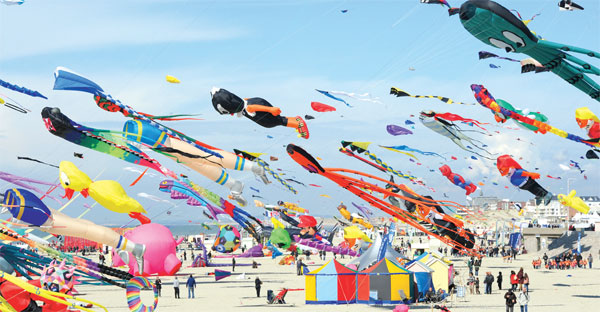Kite flying and how it all began
In the history of flight, the first lighter-than-air balloon (1783)
and the first powered aircraft (1903) are very recent when compared with
the age of kites.
The exact date and origin of the kite is not known but it is believed
that it was flown in China more than 2,000 years ago. One legend
suggests that when a Chinese farmer tied a string to his hat to keep it
from blowing away in a strong wind, the first kite was born.

The earliest written account of kite flying was about 200 B.C. when
the Chinese General Han Hsin of the Han Dynasty flew a kite over the
walls of a city he was trying to measure how far his army would have to
tunnel to reach past the defences.
Knowing this distance his troops reached the inside of the city,
surprised their enemy and were victorious.
Kite flying was eventually spread by traders from China to Korea and
across Asia to India. Each area developed a distinctive style of kite
and cultural purpose for flying them.
To regain control, General Gim Yu-sin used a large kite to carry a
fire ball into the sky. The soldiers, seeing the star return to heaven,
rallied and defeated the rebels.
Kite flying became very popular in Japan during the Edo period. For
the first time Japanese people below the samurai class were allowed to
fly kites. The Edo (now Tokyo) government tried unsuccessfully to
discourage this pastime as "too many people became unmindful of their
work." According to one story, about 300 years ago a thief was said to
use a large kite to carry himself to the top of Nagoya Castle to steal a
golden statue from the roof. All he was able to remove were a few small
pieces.
Later he was captured and punished severely when he bragged of his
exploits.
The earliest evidence of Indian kite flying comes from miniature
paintings from the Mogul Period around 1500.
- Internet |

